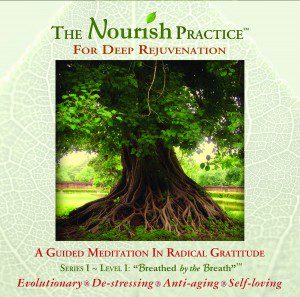Contributing writer for Wake Up World
[This is the second part of a two-part series. Part one can be read here.]
The bulk of joy experienced in the absence of shadow work is often generated from acquisition and consumption, not as a result of giving something substantial to the world. Shadow work and its inherent difficulty delivers us into a radical simplicity and ease. It produces the clear and integrated internal space with which to feel more joy and love, whereas without it, we rely on experiencing these emotions primarily through positive, extroverted means. Shadow work gives us the opportunity to experience joy by attrition instead of by so much addition. In other words, it is a path to creativity and being fulfilled by simple abundance.
[pro_ad_display_adzone id=”110028″]
By avoiding our dark places, we do not reclaim the internal ground for an enduring “enlightenment,” a relatively permanent and profound “fixture of light” inside us, as a fundamental change in our body-minds. When we do the deep work of clearing our heart’s pains—stored and recorded in our brains, as far as we know from current neuroscience research—the “light” that we establish in ourselves allows us to appreciate and wrestle with so much more darkness and to generate more compassion precisely because we are not being blocked and sabotaged so much by our own pain. This greater capacity for compassion allows us to apprehend the pain of the world and serve it in an honest, grounded, and meaningful way. It is the basis of what Andrew Harvey calls Sacred Activism, where passion and compassion, as Yin and Yang, unite in powerful dynamism to transform ourselves and the world. We become empowered this way because we have made more physiological and anatomically-based “room” inside ourselves that was once occupied by unsustainable and painfully encoded neural connections, endocrine responses, electrochemical cascades, and memory patterns—otherwise known as emotional trauma. In short: clear out the gunk and darkness, experience more grounded light and love.
Without fun and pleasure life would be meaningless. Yet, when understood as entertainment and diversion, these experiences are relatively easy, and alone do not form the bulk of our soulful contribution to life. I have long wondered if the reason for peoples’ being attached to an excess of consumerism fun is because their pain loads are high enough that they need constant distraction (a form of denying the dark) lest they would be overcome by despair. How much fun and entertainment is excess? Excess in this context is commensurate to the amount of sequestered pain one has not made transformed. When we do clear this darkness, we instead can use the energy we expended in assuaging that pain towards benefiting others, rather than blowing it off as “steam” or otherwise avoiding being in our own skin.
Don’t get me wrong, I love and promulgate fun, foolishness, nonsense, and reckless banter. I am merely reporting the reality of what I have personally experienced and perceived in others who also have cleared their own core wounds. Many days I wish it were otherwise. More easy fun time seems great, but it just doesn’t do the trick to fulfill me, for a long time now. It seems the more we integrate our dark and light depths, the more we must serve the world with our hard-won gifts in order to feel truly fulfilled. We do this primarily through work and service. I think many avoid courageous work and service because they have secretly given up on the world and themselves.
Unless they draw us self-reflectively inward, entertainment and easy fun do not deliver us to the source of our heartaches so that we have the opportunity to fulfill our lives. They just brush off the top layer of ache, stress, or inhibition. These heartaches well up from deep in our emotional pasts, the same place our creativity, sense of fulfillment, and compassion derive once we’ve cleared these heartaches. Thus is effected the resurrection of our most cherished human resources from pain and why our heartaches are indeed portals to our full spirituality. These heartaches are embedded in our bodies’ memory and in the defensive, unsustainable coping mechanisms (false self) constructed around our core wounds. Regardless our work and our form of fun, both become more honest and benefit from our more functional and free hearts forged through shadow work.
After we unwind our core pains, we actually enjoy spending more time focused and working hard at our life’s work. This work is imbued with the beauty of what we have transformed, and derives from the same body-centered internal space where we greeted and worked through these pains. In this we find the antidote to fleeting pleasures and diversion; we discover fulfillment and belonging. When we establish grounded, rewired, physiologically-based light inside us, we don’t need to constantly skim off the overflowing darkness with playfulness, or use play and fun for a bubble of denial, a child-like safe haven, that denies us our adulthood power and genius. We instead can enjoy a modicum of child-like fun, dedicating more of our time to creatively bringing forth our gifts and talents, which becomes a sophisticated kind of “fun” in itself. The more we integrate, the more this becomes a sort of mandate, a calling to mature life-purpose, that if we don’t exercise, can become a darkness of its own, as the consequence of not following or being able to follow our felt-sense of purpose in life. Norman O. Brown spoke to this when he said something to the effect of, “The real tragedy of death is to die with unlived lives left inside us.” When we don’t clean out our hearts, we die with unlived life left inside us because we did not bother to transform the hurts into the vitality and resources we could have become.
In sum, once we actualize the mature and wise replacement for excess superficial diversion, the energy that went into superficial release (the diversion of fun and play) can be now utilized sustainably from having made the dark conscious—as the marrying of Yin and Yang in our hearts, as opposed to being stuck in emotional pain and escaping into new-age fantasy divorced from the realities of everyday life.
Magical Thinking, Rites of Passage, and Adulthood Exuberance
Growing up is as much about clearing our hearts of backlogged pain as it is making our own living and moving out of mom and dad’s house. The rite of passage at the heart of becoming an adult is to heal the wounded child inside us; otherwise we remain psychologically childish, which beliefs and emotional reactions conflict with being a full-fledged adult. Some think we can simply bypass this work and assume noble “spiritual” values. Doing this creates the split between our spirituality and ordinary humanness. The wounds and traumas from the past live inside and through us, affecting all aspects of our lives. Spiritual practice is not a cure for emotional pain unless it directly addresses that pain and works with it, not above, under, and around it. Working through the pain births our spirituality from and as the cleared space inside us. This is why body-centered emotional work, which also involves clear rational thinking, is the doorway into integral spirituality, where our minds and bodies become the foundation and vehicle through which to fully enjoy ourselves and to serve life.
Ironically, many are afraid of growing up because they feel they will lose their child-like nature. Yet, clinging to excess child-like fun actually prevents us from discovering an age-appropriate, “enlightened” adult fun and creative exuberance.
What preserves a healthy dose of child-like nature into adulthood is to heal our childhood wounds, not to hang onto childish magical thinking beliefs and act like children. In other words, excessively clinging to childhood fun and mind-sets deprives us of our soulful adulthood contributions. We cling because we don’t know transformation: letting go to be reborn into something greater.
This sad state of affairs is seen, for example, in the advertising of spiritual workshops that call themselves “funshops” or “playshops,” apparently so as not to scare people away by alluding to doing real work on ourselves. I understand that some of these funshops are literally that—to teach people who do not know, how to have easy fun, which is valuable. The vast majority, however, are not for this purpose but to cater to adults who are turned off by real work on themselves.
Magical thinking is a normal faculty in children between the ages of 2-7. It is also the same brand of childish fantasy prevalent in many spiritual circles. Beliefs that all is light, all is good, everything happens for a reason (so we don’t need to deal with disappointment), only good comes from misfortune, or that pain and misfortune are simply illusions, are all examples of childish magical thinking. They deny the dark, the real pains of life. They also happen to be the theme of many spiritual “playshops.” Applying common sense and critical thinking to these new-age aphorisms, we discover that indeed they are not true, just as a childhood fantasies are untrue. In this exposé colleague and fellow writer Julian Walker reminds us how good thinking are crucial for our spirituality!
[pro_ad_display_adzone id=”110030″]
Cruelty, evil, and pain exist without positive outcome. People get sick and die, and die tragically before their time. Gobs of money are spent on killing one another, instilling fear, rage, horror and polluting the planet. Grief, remorse, service, and activism are the mature remedies for tragedy and misfortune.
Magical thinking is what children do because their faculties for logic and reason are not yet developed. So they use fantasy to make sense of their world. They might believe that their recently deceased pet is not really dead, but must return one day, because children don’t yet understand the finality of death. Otherwise reasonable, intelligent adults do the same through complicated beliefs in an afterlife, messiahs, and salvation to avert the pains of ordinary life, the sadness of aging (when we have recovered our inherent joie de vivre it is even more inherently sad to know that life will not go on forever), and the inevitability of death.
Reasonable adults understand magical thinking as a natural stage of development, which children grow out of. Yet, when adults ignore their psychological pain and revert to fantasy and other imaginary feel-good beliefs as an unconscious attempt to experience the inherent joy of a healed “heart” and mind, and in place of reason and logic, we have big problems. We get presidents that think hurricanes are the wrath of God. This, among other urgent realities needing recognition, denies the reality of global warming, for example, thereby impeding our progress towards collective wellness. We find deranged people flying planes into buildings, and others who imagine they never did! We get rampant pedophilia among the supposedly pious. We end up with tragic deaths in spiritual cults. We see multinational corporations running roughshod over our planet, ruining the party for those of us who have managed to find ordinary beauty and simple abundance enough. And we get potential shape-shifters sold out on unrealistic new-age belief systems that offer little practical help to deeply healing our everyday struggles and joys. Adults thinking magically about real-life problems is the spiritual correlate to excessively hanging onto childhood kinds of play instead of pursuing sustainable adulthood forms of fun, fulfillment, and service.
Disembodied, fantasy-based “spiritual” pursuits that do not respect reality, as well as investments in fun without cultivating our comprehensive adult gifts to the world, are fool’s gold. In fact, you can almost be guaranteed that the degree to which a person pursues magical thinking and unproven, fantasy-based, feel-good spirituality is directly proportional to their unreckoned-with psychological pain. I tip my hat to Goethe (quoted with this article) who alluded to this truth many years ago!
Love, Activism & the Sacred Feminine
Most of us want to fully love ourselves, one another, and the world. I believe many of us, even if we don’t call it love or kindness, at some level yearn to give all we are to life. But when we live with a body full of old, unhealed hurts, giving all we can gets subjugated into trying to get all we can. Getting is a form of consuming, a perverted attempt to feel certain pleasures we can more readily and fully experience paradoxically, by letting go, such as appreciation, trust, and gratitude. Again, this goes back to the difference in joy by attrition vs. addition (“less is more”).
We’re just not taught how to do comprehensive dark work, and it certainly wasn’t budgeted for in elementary school. We’re not educated in the art of paradox, in holism that benevolently embraces dark and light, represented so wonderfully in the Yin-Yang symbol. We are primarily taught external, logistical skills, how to go out and fight, and how to get as much as we can for ourselves (all also important, to varying degrees). But, we are not taught the alchemy of emotional transformation, how to advance and gain by breaking down, grieving, and clearing away. We are not taught addition by attrition, but instead by grabbing and linear pursuit. We are not taught how to embrace pain so that we actualize comfort, peace, and a sense of wholeness—a safe haven, a “heaven”—inside our bodies, on Earth. To do so is an antidote to projected, covertly violent, and problematic religious and new-age fantasies.
Internal, emotional transformation is the Yin-Yang symbol in action—marrying light and dark, pain and pleasure, love and fear. This ancient symbol of wholeness, still both literally and poetically relevant to our world today, teaches us that the whole circle, both dark and light, mutually support and depend on one another to achieve wholeness. For inner transformation work, this metaphor is practically realized by using the light of our awareness and unconditional love to embrace and love our heartaches. Doing so liberates the power and resources stuck in our bodies’ traumas, which are then able join the chorus of our light-working.
When we deny our pain, we avoid it in the world and cannot fully address its healing. When we deal with our collective pain, one by one, we will create more empathy, sustainable communities, and a more prolific ecology. Our unilaterally light-bearing, positivity-oriented culture, as well as our obsession with progress and pretty appearances, casts a huge shadow over the mountains, rivers, forests, oceans and our hearts many of us now are so passionately trying to protect.
It is reasonable to fear the future we are now creating. When we invoke and integrate our shadows, we can employ this fear to serve our love, to make changes informed by the dark’s wisdom and the light of our restored minds. This is why activism, as a love for our world, is perhaps the most potent manifestation of spiritual integrity. Out of love, we now have to fight the good fight. The more we have dealt with our own shadows, the more effectively we can think and work with one another for a new world not obsessed with heaven and hell being somewhere else, out of sight, but right here, all around and inside us.
Our fight today is a fight for sanity, integrity, for our fundamental health on the planet. It’s our passionate struggle to return a sustainable light to the darkness cast by too many people, and too many “gone crazy for things,” as Mary Oliver put it. Less obviously, it is a fight to return wholeness to those “gone crazy for (the) nothing” of vapid spiritualities and religious dogma, which I contend exist in large part due to many generations’ ignoring the shadow and stigmatizing the dark, the sacred feminine.
We cannot love the Earth enough if we have not embraced our shadow wholeheartedly enough to plunge us that deeply back into our bodies, into our deep hearts, into beauty, as our fundamental physical and emotional connections to this Earth. If we appreciate the power of the feminine, let us celebrate her in her terrifying and voluptuous darkness, which is her way of power. Let us reside there until transformed, until we are imbued with the wisdom and compassion necessary to embody, inform, and round-out the current run-away, perverted masculine regime of narrow-minded, destructive progress. We must inform the sacred masculine, so sadly desperate for our integration, with the hidden light of our deep hearts for enjoyable, sustainable progress without so many atrocious side-effects. We liberate this hidden light through shadow work. Until we do, there will always be too much fear, too much running away and creating mischief, bloodshed and suffering festering in the background of our achievements.
To bear our light to the world, to share our deep care that matters to people’s ordinary heartaches and struggles, we have to reach up to bend down the straight, narrowly determined line of the disembodied mind, literalism, and stubborn positivity-at-all-costs. We have to continue to bend this iron-willed bar down, down inside ourselves and around the land and our communities. We must re-consecrate the sacred feminine, dark-embracing power of compassion, pause, descent, and respect for transformation through death and rebirth. We must bend it back into the true shape of our hearts—for a future worth living for, for a future worth fighting for, for a tomorrow we can live to see, which all can deeply enjoy.
The Nourish Practice
Jack Adam Weber’s “The Nourish Practice” is an easy, guided meditation-Qi Gong practice in radical gratitude and self-love. It is an Earth-based, body-centered practice — at once physiological and mythological — that is deeply relaxing and replenishing, especially for modern-day burn-out syndrome, and requires little physical effort.
The Nourish Practice “resets your nervous system” and fosters a rich inner life. You can purchase The Nourish Practice as a CD or Digital Download here.
Previous articles by Jack Adam Weber:
- Relationships: The Costs of Staying When We Should Leave
- Sex, Love and Attachment
- Emotional Work
- Choosing a Partner – How to Avoid Relationship Suicide
- Re-Thinking Love: Why Our Hearts Must Also Be Minded
- Spirituality – Reality Check
- 11 Crucial Tips for Better Digestive Health
- Shadow Work: Becoming a Sustainable Light Worker (Part 1)
- Oneness in Action: The GMO Eradication Movement
- After the Hurricane: Lessons from the Heart of Nature
- Relationships: How They Can Make Us Happier
- Heartbreak – Loving Ourselves Through Difficult Times
About the author:
 Jack Adam Weber, L.Ac. is a Chinese medicine physician, author, celebrated poet, organic farmer, and activist for body-centered spirituality. His books, artwork, and provocative poems can be found at his website PoeticHealing.com. He is also the creator of The Nourish Practice, an Earth-based rejuvenation meditation. Weber is available by phone for medical consultations and life-coaching.
Jack Adam Weber, L.Ac. is a Chinese medicine physician, author, celebrated poet, organic farmer, and activist for body-centered spirituality. His books, artwork, and provocative poems can be found at his website PoeticHealing.com. He is also the creator of The Nourish Practice, an Earth-based rejuvenation meditation. Weber is available by phone for medical consultations and life-coaching.
You can connect with Jack Adam Weber on Facebook or by emailing [email protected].
[pro_ad_display_adzone id=”110027″]








